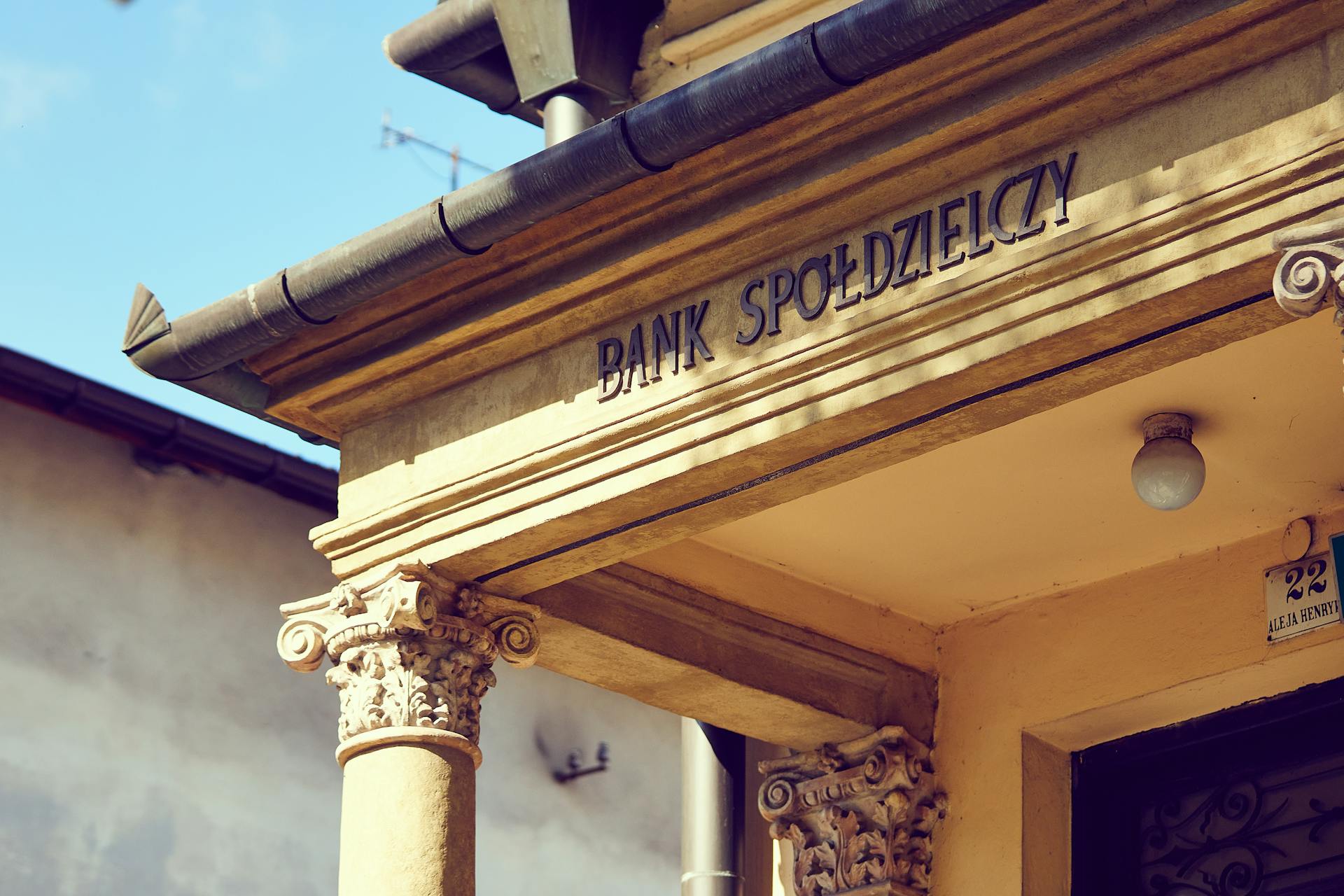
The Libor scandal led to a major overhaul of the benchmark interest rate, with the UK's Financial Conduct Authority (FCA) phasing out Libor by the end of 2021.
The Alternative Reference Rates Committee (ARRC) was formed in 2014 to identify a replacement for Libor in the US. The committee recommended the Secured Overnight Financing Rate (SOFR) as a replacement.
SOFR is based on actual transactions in the US Treasury repo market, making it a more transparent and reliable benchmark. It's calculated daily by the Federal Reserve Bank of New York.
The European Union has also developed its own alternative benchmark, the Euro Short-Term Rate (ESTR), which is based on transactions in the euro overnight unsecured market.
Related reading: Sofr Rate vs Libor
Libor Scandal
The Libor scandal was a major controversy that rocked the financial world. Major banks, including Barclays, ICAP, Rabobank, Royal Bank of Scotland, UBS, and Deutsche Bank, were fined heavily for their role in manipulating the Libor rates.
The scandal was a result of banks submitting artificially low or high estimates of their lending rates to influence the Libor, which is a benchmark interest rate used to determine the cost of borrowing. This manipulation allowed traders to make profits at the expense of others.
Banks could submit artificially high or low estimates of their lending rates, making the Libor susceptible to rate-rigging. The new metric, SOFR, uses actual lending rates, not the banks' estimations.
Regulators in at least ten countries on three different continents investigated the rigging of the Libor and other interest rates. Around 20 major banks were named in investigations and court cases.
The scandal cost US states, counties, and local governments at least $6 billion in fraudulent interest payments, on top of $4 billion spent to unwind their positions exposed to rate manipulation.
Homeowners in the US filed a class action lawsuit against 12 of the largest banks, alleging that Libor manipulation made mortgage repayments more expensive than they should have been.
The Libor underpinned approximately $350 trillion in derivatives, and one trader's messages indicated that for each basis point (0.01%) that Libor was moved, those involved could net "about a couple of million dollars".
Curious to learn more? Check out: Libor Rate Scandal
Regulatory investigations were carried out by the US Department of Justice, the Canadian Competition Bureau, and other regulatory bodies.
The scandal led to the resignation of several high-ranking executives, including Marcus Agius, chairman of Barclays, and Bob Diamond, the chief executive officer of Barclays.
A parliamentary investigation was also conducted, with Jerry del Missier, a former senior Barclays executive, testifying that he had received instructions from Robert Diamond to lower rates after Diamond's discussions with bank regulators.
The cost to colluding and suspect banks from litigation, penalties, and loss of confidence may drive down finance industry profits for years, potentially exceeding the cost of asbestos lawsuits.
Here is a list of some of the major banks involved in the Libor scandal:
- Barclays
- ICAP
- Rabobank
- Royal Bank of Scotland
- UBS
- Deutsche Bank
- HSBC
- JPMorgan
- Citibank
Libor Reforms
The Libor scandal led to significant reforms in the way Libor rates are set and regulated. The administration of Libor itself became a regulated activity overseen by the UK's Financial Conduct Authority.

Knowingly or deliberately making false or misleading statements in relation to benchmark-setting was made a criminal offence in UK law under the Financial Services Act 2012. This change in law helped to prevent banks from manipulating Libor rates for their own gain.
The Danish, Swedish, Canadian, Australian, and New Zealand Libor rates were terminated as part of the reforms. This reduced the number of Libor rates that needed to be set and made the process more manageable.
From the end of July 2013, only five currencies and seven maturities were quoted every day, reducing the number of Libor rates from 150 to 35. This made it more likely that the rates submitted were underpinned by real trades.
Each individual submission from the banks was embargoed for three months to reduce the motivation to submit a false rate. This change helped to prevent banks from manipulating Libor rates to portray a flattering picture of creditworthiness.
A new code of conduct was introduced by a new interim oversight committee, outlining the systems and controls firms had to have in place around Libor. This included having a named person responsible for Libor and keeping records that could be audited by regulators if necessary.
In early 2014, NYSE Euronext took over the administration of Libor from the British Bankers Association. The new administrator, NYSE Euronext Rates Administration Limited, was a London-based, UK registered company regulated by the UK's Financial Conduct Authority.
Readers also liked: New Development Bank
Libor Alternatives

The NCUA doesn't endorse a specific replacement rate for USD LIBOR, but a credit union can use a reference rate it determines is appropriate for its risk management and member needs.
A variety of replacements for LIBOR have been offered, and in some cases, banks allow their customers to choose which rate to track. The Alternative Reference Rates Committee (ARRC) was created to assess viable alternatives to the LIBOR.
The ARRC comprises a diverse group of institutions, including AXA, Bank of America, BlackRock, and others, as well as several government agencies. These institutions aim to identify a robust fallback rate that can replace LIBOR.
Some popular alternatives to LIBOR include the European Interbank Offered Rate (EURIBOR), the Tokyo Interbank Offered Rate (TIBOR), the Shanghai Interbank Offered Rate (SHIBOR), and the Mumbai Interbank Offered Rate (MIBOR).
You might enjoy: Daily Libor Rate History
SOFR
SOFR is a broad Treasury repo financing rate that was recommended by the Alternative Reference Rates Committee (ARRC) as an alternative to the USD LIBOR. It's a fully transactions-based rate that will have the widest coverage of any Treasury repo rate available.
Take a look at this: Alternative Investment Market

The ARRC announced SOFR as its recommended alternative to the USD LIBOR in June 2017. SOFR is published on a daily basis by the Federal Reserve Bank of New York, starting from April 3, 2018.
SOFR is a good representation of the general funding conditions of the overnight Treasury repo market. It reflects an economic cost of lending and borrowing relevant to a wide array of market participants active in these markets.
Some of the market participants that will be affected by SOFR include broker dealers, money market funds, asset managers, insurance companies, securities lenders, and pension funds.
The key features of SOFR are:
- Published daily by the Federal Reserve Bank of New York
- Transactions-based rate with the widest coverage of any Treasury repo rate available
- Reflects an economic cost of lending and borrowing relevant to a wide array of market participants
SOFR is a secured rate and does not have a credit risk element, making it a more stable alternative to the USD LIBOR.
USD Alternatives
The NCUA doesn't endorse a specific replacement rate for USD LIBOR, but a credit union may use a reference rate it determines is appropriate for its risk management and member needs.

Ameribor is a benchmark interest rate created by the American Financial Exchange, reflecting the actual borrowing costs of thousands of small, medium, and regional banks across America. It has traded more than $550 billion since inception in 2015.
The U.S. Dollar ICE Bank Yield Index is an index proposed by Intercontinental Exchange Benchmark Administration to measure the yields at which investors are willing to lend U.S. dollar funds to large, internationally active banks on a wholesale, unsecured basis.
Other alternatives to LIBOR include the European Interbank Offered Rate (EURIBOR), Japan's Tokyo Interbank Offered Rate (TIBOR), China's Shanghai Interbank Offered Rate (SHIBOR), and India's Mumbai Interbank Offered Rate (MIBOR).
Here are some of the key characteristics of these alternatives:
Real Estate Loans
Credit unions can originate adjustable-rate mortgages (ARMs) using loan underwriting standards established by government-sponsored enterprises (GSEs) like Fannie Mae or Freddie Mac.
These GSEs provide fallback language that describes the steps to take if LIBOR is no longer available and how a replacement index will be substituted.

Fannie Mae and Freddie Mac stopped acquiring single-family and multifamily LIBOR ARMs on December 31, 2020.
For non-conforming or customized ARMs, examiners should determine if the ARM has robust fallback language in the event the variable rate index is no longer available.
ARMs that conform to GSE underwriting standards represent low LIBOR transition risk exposure.
Credit unions that have originated non-conforming ARMs should review their portfolios to ensure they have robust fallback language in place.
Libor Impact
Municipalities lost at least $6 billion due to the manipulation of Libor, in addition to $4 billion paid to unwind backfiring interest rate swaps.
The city of Baltimore and others in the US filed a class action lawsuit against Libor setting banks in April 2012.
Before the 2007-2008 financial crisis, states and localities bought $500 billion in interest rate swaps to hedge their municipal bond sales.
This was a result of investment bankers offering local governments a way to save money on the sale of municipal bonds by selling variable interest rate bonds.

Local governments, such as Baltimore, purchased interest rate swaps to hedge costs on the sale of variable interest rate bonds.
The interest rate swap mechanism generally works well, but between 2007 and 2010, payments to local governments on their swaps artificially decreased.
The cost on their bonds remained at actual market rates, while the payments on their interest rate swaps were based on the artificially lower Libor rate.
Municipal bond rates are linked to the SIFMA Municipal Bond Index interest rate, which decoupled from the Libor rate during the 2007-2008 financial crisis.
As a result, municipalities continued to pay on their bonds at the actual market Sifma rate but were paid on their interest rate swaps at the artificially lower Libor rate.
Readers also liked: European Payments Initiative
Libor Transition
The Libor transition is a significant undertaking for credit unions, and it's essential to be prepared. Credit unions should plan to transition away from using Libor in any new transactions by December 31, 2021.

To determine if a credit union's Libor risk exposures are minimal, examiners will consider three criteria. These include whether the credit union is prepared to stop originating or engaging in any Libor-related transactions by December 31, 2021, and whether they have minimal exposure to Libor-indexed transactions that mature after December 31, 2021, or June 30, 2023.
Credit unions with complex products or multiple product lines tied to Libor should maintain detailed transition plans and project roadmaps. This includes defining transition timelines and milestones, and sharing regular status updates with management and board committees.
To ensure operational preparedness and risk control, credit unions should identify internal and vendor-provided systems that use or require Libor as an input. If possible, they should remediate these systems ahead of the respective Libor discontinuance date.
A contingency plan should be established in case a service provider is unable to deliver a timely solution. Fallback language, which outlines the process for replacing a benchmark rate, should be included in new contracts, and existing contracts should be reviewed to determine the impact of Libor's discontinuation.
Here's a summary of the key deadlines for Libor transition:
- December 31, 2021: Credit unions should stop originating or engaging in any Libor-related transactions.
- June 30, 2023: Credit unions should have minimal exposure to Libor-indexed transactions that mature after this date.
Libor Replacement

The NCUA doesn't endorse a specific replacement rate for USD LIBOR, so credit unions get to choose a reference rate that fits their needs.
Credit unions can use a reference rate that they determine is suitable for their risk management and member needs. The choice of rate is up to each individual credit union.
All LIBOR-based contracts that mature after December 31, 2021, should include contractual language that provides for use of a robust fallback rate. This ensures a smooth transition for the contracts.
Credit unions have until June 30, 2023, to update their contracts for the one-, three-, six-, and twelve-month LIBOR rates to include a fallback rate.
Libor Regulation
Credit unions must provide a transition plan to their personnel to implement the transition and regular status updates to senior management and the board.
Examiners will review management's plan to determine if the credit union can identify and understand its LIBOR exposures, and they will discuss these exposures with management to evaluate the credit union's plan to transition away from LIBOR-based financial contracts before December 31, 2021.
This ensures that any exposures to the LIBOR setting discontinuance dates are identified and managed, preventing any potential issues with the transition.
Related reading: Will Synchrony Bank Settle
Regulatory Investigations

Regulatory investigations into Libor rate manipulation were underway in 2011, focusing on Bank of America Corp., Citigroup Inc., and UBS AG. The US Department of Justice conducted a criminal investigation, examining abuses such as traders receiving insider knowledge from bankers before Libor rates were set.
Regulators were scrutinizing the possibility that traders were in direct communication with bankers, allowing them to predict the day's fixing and gain an advantage. This abuse had significant implications, as Libor underpinned approximately $350 trillion in derivatives.
The Canadian Competition Bureau was also investigating price fixing by five banks of the yen denominated Libor rates. Court documents revealed that the bureau had been pursuing the matter since at least January 2011, and a whistleblower provided detailed information about the alleged collusion.
The alleged participants in the price fixing included the Canadian branches of the Royal Bank of Scotland, HSBC, Deutsche Bank, JP Morgan Bank, and Citibank, as well as ICAP, an interdealer broker.
Here's an interesting read: Consumer Credit Bureau Report
Regulatory bodies were taking action against banks involved in the scandal. Barclays Bank was fined $200m by the Commodity Futures Trading Commission, $160m by the United States Department of Justice, and £59.5m by the Financial Services Authority for attempted manipulation of the Libor and Euribor rates.
Here are some key regulatory bodies involved in the Libor scandal:
- US Department of Justice
- Commodity Futures Trading Commission
- Financial Services Authority (UK)
- Canadian Competition Bureau
These regulatory bodies were working to hold banks accountable for their actions and prevent similar scandals in the future.
F Oversight
Credit unions must provide their transition plan to personnel who will implement it, as well as regular updates to senior management and the board.
Examiners will review management's plan to ensure the credit union can identify and understand its LIBOR exposures.
A credit union should have a plan in place to transition away from new LIBOR-based financial contracts by December 31, 2021, to manage exposures to the respective LIBOR setting discontinuance dates.
Examiners will discuss LIBOR exposures with management to evaluate the credit union's transition plan.
A different take: Fixed Finance Charge
Libor Studies and Reports
The Wall Street Journal released a study in 2008 that questioned the reliability of Libor submissions by some banks during the 2008 credit crunch.
The study suggested that some banks might have understated their borrowing costs, which could have misled others about their financial position.
In response, the BBA claimed that Libor continued to be reliable even in times of financial crisis.
However, the Bank for International Settlements stated in its March 2008 Quarterly Review that there was no evidence of manipulation.
The International Monetary Fund also found in its October 2008 Global Financial Stability Review that U.S. dollar Libor remained an accurate measure of a typical creditworthy bank's marginal cost of unsecured U.S. dollar term funding.
Economists Connan Snider and Thomas Youle corroborated the Wall Street Journal study in 2010, concluding that some member banks understated their Libor submissions.
They suggested that the reason for understatement was not to appear strong, but to make substantial profits on their large Libor interest-linked portfolios.
A fresh viewpoint: What Is Financial Asset Management Systems
For example, Citigroup had interest rate swaps of notional value of $14.2 trillion in the first quarter of 2009.
Bank of America had interest rate swaps of notional value of $49.7 trillion, and JPMorgan Chase had interest rate swaps of notional value of $49.3 trillion during the same period.
A small unhedged exposure to the Libor could generate large incentives to alter the overall Libor.
Recommended read: Cash Out Refi Loan to Value
Frequently Asked Questions
What is today's LIBOR rate?
Today's LIBOR rates are 4.99% for 1 year and 4.94% for 3 months. Check for the latest rates to make informed financial decisions.
What does LIBOR mean?
LIBOR stands for London Interbank Offer Rate, a global benchmark for short-term interest rates. It's a key reference rate used in financial markets for various transactions, including mortgages and swaps.
What is the LIBOR exchange rate?
LIBOR is the average interest rate at which banks lend unsecured loans to each other in the London money market, with rates varying by currency and maturity. It's not an exchange rate, but rather a benchmark interest rate used in financial transactions.
What is the London Interbank offered rate LIBOR?
LIBOR is the average interest rate at which top banks lend to each other in the London money market. It's a key benchmark for global interest rates, influencing borrowing costs for individuals and businesses worldwide.
Does LIBOR still exist in the UK?
No, LIBOR has permanently ceased to exist in the UK, with all 35 settings ceasing publication on 30 September 2024. This marks the end of an era for the widely used interest rate benchmark.
Sources
- https://ncua.gov/regulation-supervision/letters-credit-unions-other-guidance/evaluating-libor-transition-plans
- https://en.wikipedia.org/wiki/Libor
- https://www.investopedia.com/terms/l/libor.asp
- https://en.wikipedia.org/wiki/Libor_scandal
- https://www.consumerfinance.gov/compliance/compliance-resources/other-applicable-requirements/libor-index-transition/libor-transition-faqs/
Featured Images: pexels.com


